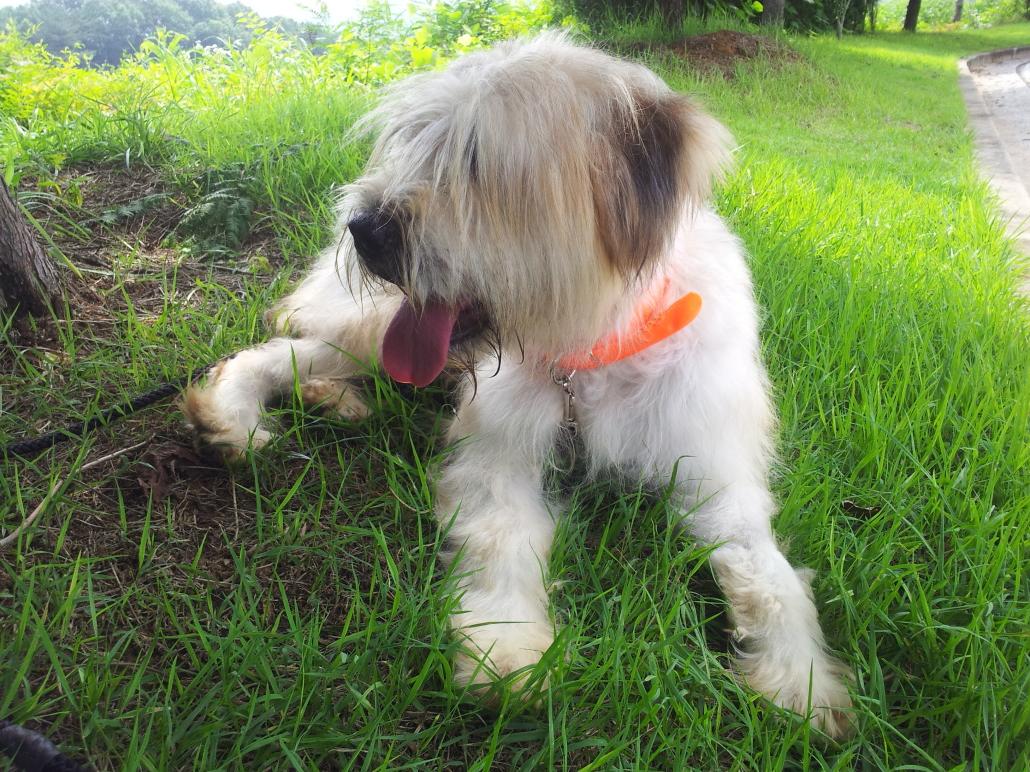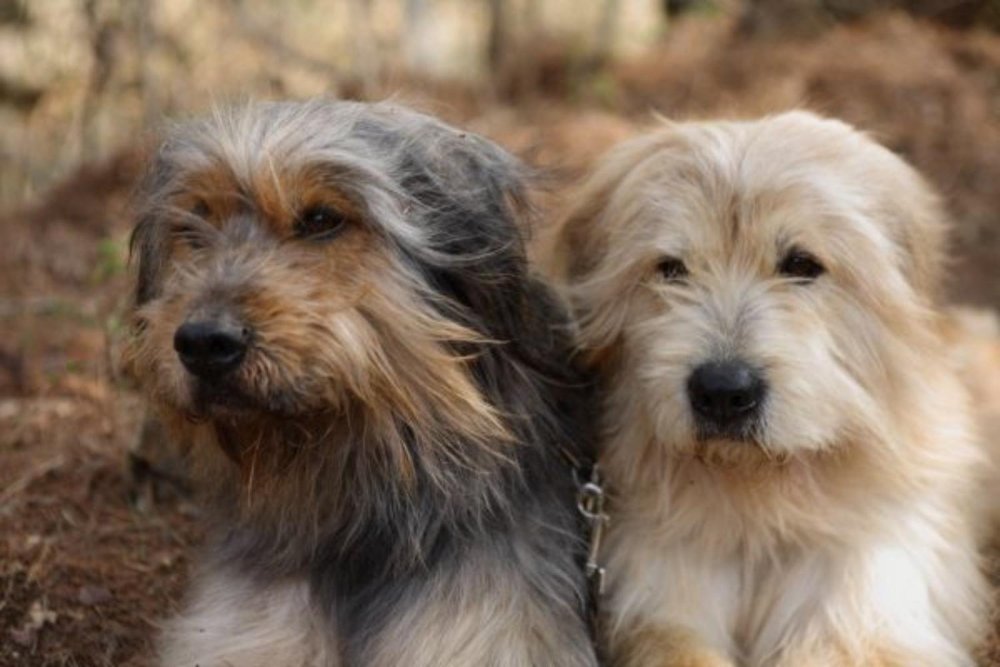- Breed Category: Companion dog
- Country of Origin: South Korea
- Average Height: Males 50-60 cm, Females 48-58 cm
- Average Weight: Males 18-27 kg, Females 16-25 kg
- Average Life Span: 12-15 years
- Grooming Requirements: Regular brushing needed
- Exercise Requirements: Moderate daily exercise
- Coat Type: Long and shaggy
- Coat Color Variations: Black, brown, grey, gold
- Shedding Level: Moderate shedding
- Ear Type: Floppy ears
- Tail Type: Bushy and curled
- Temperament: Loyal, friendly, protective
- Intelligence Level: Above average intelligence
- Barking Tendency: Moderate barking
- Compatibility with Children: Good with children
- Compatibility with Other Pets: Generally good with other pets
- Training Ease: Requires consistent training
- Common Health Issues: Hip dysplasia, eye problems
- Dietary Needs: Balanced diet, avoid overfeeding
- Energy Level: Moderate energy
- Drooling Tendency: Low drooling
- Sensitivity to Weather: Sensitive to heat
- Overall Maintenance Level: Moderate maintenance
- Original Purpose: Guarding and companionship
- Year of Recognition by Kennel Clubs: Not widely recognised
- Apartment Friendly: Suitable for apartments
- Best Suited For: Families, active individuals
- Cost of Ownership: Moderate cost
- Unique Traits: Shaggy coat, protective nature
- Cultural Significance: Symbol of good fortune in Korea
The Sapsali dog, often referred to as Korea’s “lion dog,” is a breed known for its distinctive shaggy coat and loyal nature. These dogs have a rich history, dating back over a thousand years, and were once believed to ward off evil spirits.
Originating from Korea, the Sapsali was nearly driven to extinction during the Japanese occupation but was revived through dedicated breeding efforts. Today, they are cherished for their gentle temperament and strong bond with families.
“The Sapsali is not just a pet; it’s a piece of living history, embodying resilience and companionship.”
– Korean Canine Heritage Society
This article aims to inform you about the Sapsali’s unique characteristics, fascinating history, and essential care tips.
Early Development and Cultural Significance of the Sapsali

Early Development of the Breed
The Sapsali dog has roots that stretch back over a millennium in Korea. Originally bred for their protective instincts, these dogs were believed to have the power to ward off evil spirits. Their development was closely tied to their role as guardians, both of homes and of spiritual well-being. Over time, their distinctive shaggy coats and loyal nature became defining traits.
Role in Korean Culture and History
In Korean culture, the Sapsali is more than just a pet; it’s a symbol of protection and good fortune. Historically, they were companions to the Korean nobility and were often seen in royal courts. Their presence in folklore and traditional stories highlights their cultural importance, serving as a testament to their enduring legacy.
Key Historical Figures and Events
During the Japanese occupation of Korea, the Sapsali faced near extinction. However, dedicated individuals and organisations, like the Korean Canine Heritage Society, played crucial roles in reviving the breed. Their efforts ensured that the Sapsali could continue to be a part of Korea’s living history.
Physical Characteristics
The Sapsali is easily recognisable by its long, shaggy coat, which gives it a lion-like appearance. They are medium-sized dogs with a sturdy build, and their expressive eyes are often hidden beneath their thick fur. This breed is known for its gentle and friendly demeanour, making them excellent companions for families.
Appearance and Unique Traits
The Sapsali stands out with its medium size and a coat that’s nothing short of iconic. Their long, shaggy fur gives them a distinctive, almost lion-like look, which is why they’re often called Korea’s “lion dog.” The coat can come in various colours, including shades of gold, black, and brown, often with unique markings that add to their charm. Beneath all that fur, they have a sturdy build, perfect for their role as protectors.
Temperament and Behaviour
When it comes to temperament, the Sapsali is as gentle as they come. They’re known for their friendly and loyal nature, making them fantastic family dogs. These dogs are not just about looks; they have a calm and composed demeanour that makes them great companions. They bond deeply with their families and are known to be protective, yet they’re also playful and enjoy being part of family activities.
Personality Traits and Family Suitability

Typical Personality Traits
The Sapsali is renowned for its loyalty, friendliness, and intelligence. These dogs form strong bonds with their families, often becoming a steadfast presence in the home. Their friendly nature makes them approachable and easy to get along with, while their intelligence ensures they are quick learners, eager to please their owners.
Suitability as a Family Pet
As a family pet, the Sapsali excels. Their gentle temperament and protective instincts make them ideal companions for households of all sizes. They thrive in environments where they can be part of the family, enjoying both quiet moments and lively family activities.
Interaction with Children and Other Animals
Sapsalis are known for their patience and playfulness with children. They are gentle and tolerant, making them great playmates for kids. When it comes to other animals, they generally get along well, especially if socialised from a young age.
Training and Exercise Needs
Training a Sapsali is usually a rewarding experience due to their intelligence and eagerness to learn. Consistent, positive reinforcement methods work best. They require regular exercise to keep them healthy and happy, so daily walks and playtime are essential.
Training, Exercise, and Health of the Sapsali

Importance of Early Training and Socialisation
Getting a head start on training and socialisation is crucial for the Sapsali. These dogs are naturally intelligent and eager to please, making them quick learners. Early exposure to different environments, people, and other animals helps them grow into well-rounded adults. This foundation is key to ensuring they develop into confident and adaptable companions.
Recommended Training Techniques
When it comes to training, positive reinforcement is the way to go. Sapsalis respond well to praise, treats, and play as rewards. Consistency is important, so regular training sessions will help reinforce good behaviour. Avoid harsh methods, as these can be counterproductive with this sensitive breed.
Daily Exercise Requirements and Activities They Enjoy
Sapsalis are active dogs that need daily exercise to stay healthy and happy. A couple of walks a day, combined with some playtime, will keep them content. They enjoy activities like fetch, agility exercises, and even a good romp in the backyard. Keeping them physically and mentally stimulated is essential.
Health and Lifespan
Generally, Sapsalis are healthy dogs with a lifespan of around 12 to 15 years. Regular vet check-ups, a balanced diet, and proper exercise are key to maintaining their health. Like any breed, they can be prone to certain genetic conditions, so responsible breeding and regular health screenings are important.
Health and Care of the Sapsali

Common Health Issues
Sapsalis are generally robust, but like any breed, they can face certain health issues. Hip dysplasia and eye conditions are among the more common concerns. Regular vet visits and early detection are crucial in managing these issues effectively.
Average Lifespan and Health Tips
With proper care, a Sapsali can live between 12 to 15 years. To keep them healthy, ensure they have a balanced diet, regular exercise, and mental stimulation. A healthy lifestyle can significantly contribute to their longevity and quality of life.
Preventative Care Recommendations
Preventative care is key. Regular vaccinations, flea and tick prevention, and dental care should be part of their routine. Annual health check-ups can catch potential issues early, ensuring your Sapsali stays in top shape.
Grooming and Maintenance
The Sapsali’s iconic shaggy coat requires regular grooming to prevent matting. Brushing a few times a week will keep their fur in good condition. Occasional baths and regular nail trimming are also important to maintain their overall hygiene.
Coat Care and Grooming Routines
Shedding and Seasonal Grooming Tips
The Sapsali’s shaggy coat is one of its most striking features, but it does require some attention. Regular brushing is essential to prevent tangles and matting. During shedding seasons, which typically occur in spring and autumn, you might notice an increase in loose fur. A more frequent brushing routine during these times can help manage the shedding and keep your home fur-free.
Investing in a good quality brush and setting aside time for grooming can make a big difference. Not only does it keep their coat looking great, but it also strengthens the bond between you and your dog.
Diet and Nutrition
A balanced diet is crucial for the Sapsali’s overall health and well-being. High-quality dog food that meets their nutritional needs is a must. Look for options rich in protein and essential fatty acids to support their energy levels and maintain a healthy coat. Fresh water should always be available, and treats should be given in moderation to prevent weight gain.
Consulting with a vet can help tailor a diet plan that suits your Sapsali’s specific needs, ensuring they get the right nutrients to thrive.
Nutritional Needs and Feeding Guidelines for the Sapsali

Nutritional Needs for Optimal Health
Feeding your Sapsali a balanced diet is key to their health and vitality. High-quality dog food with a good mix of proteins, fats, and carbohydrates is essential. Proteins support muscle development, while fats provide energy and help maintain their iconic shaggy coat. Don’t forget about vitamins and minerals, which are crucial for overall well-being.
Foods to Include and Avoid
Include lean meats, fish, and vegetables in their diet. These provide essential nutrients and keep their energy levels up. Avoid foods high in artificial additives, sugars, and unhealthy fats. Chocolate, grapes, and onions are toxic to dogs and should be kept out of reach.
Feeding Schedules and Portion Recommendations
Establishing a regular feeding schedule helps maintain their digestive health. Typically, two meals a day work well for adult Sapsalis. Puppies may require more frequent meals. Portion sizes depend on their age, weight, and activity level, so consult your vet for personalised advice.
Fun Facts and Trivia
Did you know the Sapsali’s shaggy coat was once believed to ward off evil spirits? This breed’s history is as rich as its appearance. Despite their lion-like look, they are gentle giants at heart, known for their loyalty and protective nature.
Interesting Tidbits and Famous Sapsali Dogs

Interesting Tidbits about the Breed
The Sapsali dog is often surrounded by fascinating folklore. In ancient Korea, these dogs were believed to have mystical powers, capable of warding off evil spirits. This belief was so strong that they were often kept in homes as spiritual protectors. Their shaggy coats, reminiscent of a lion’s mane, only added to their mythical aura. Despite their majestic appearance, Sapsalis are known for their gentle and friendly nature, making them approachable companions.
Another interesting fact is their near extinction during the Japanese occupation of Korea. Thanks to dedicated breeding efforts, the Sapsali was brought back from the brink, preserving a vital piece of Korean heritage.
Famous Sapsali Dogs in Media or History
While the Sapsali may not be as globally recognised as some other breeds, they hold a special place in Korean culture. They have appeared in various Korean dramas and films, often symbolising loyalty and protection. One notable Sapsali was featured in a popular Korean TV series, where its role as a loyal companion captured the hearts of many viewers.
In history, Sapsalis were companions to Korean nobility, often seen in royal courts. Their presence in historical records and art highlights their esteemed status and enduring legacy in Korean culture.
Final Thoughts
The Sapsali is a symbol of resilience and companionship. This breed’s rich history and loyal nature make it a cherished companion for families. Despite facing near extinction, the Sapsali’s revival highlights the dedication to preserving cultural heritage and the breed’s unique traits. As you consider welcoming a Sapsali into your home, remember their need for love, care, and regular grooming. Embrace the opportunity to share your life with a piece of living history, and let the Sapsali’s protective spirit enrich your family.
